Humanity sees you take control of a Shiba Inu to guide swathes of people from point A to point B in a series of intriguing puzzles. Available on consoles and PC, how does this latest release from Enhance Games stack up when played in VR mode? Read on to find out.
Co-developed by Enhance Games and tha Limited and executive produced by Tetsuya Mizuguchi, Humanity launched this week for PC and PlayStation consoles. You'll take control of a Shiba Inu, guiding mindless masses of people from one area of the map to another. Moving the dog around the grid-based map, you can issue location-based commands that will help the humans turn, jump, float and swim their way the end goal.
Humanity can be played entirely flatscreen, but players also have the option to play in VR Mode on all platforms with support for PSVR 2, PSVR and PC VR headsets. The entire story mode campaign is playable in VR from start to finish, along with the hypothetically-endless offering of user-created community levels online. The only mode that's not supported in VR is the game's level creator – but more on that later.
Regardless of what mode or platform you choose to play on, puzzle game fans are in for a good time. This is truly entertaining release, with excellent pacing and puzzles that challenge but rarely linger into frustration. It's well-polished and stylish, with visuals that can be admired from any angle.
The puzzles start off simple. Each level is mapped out on a cube-based, isometric 3D grid with fully-adjustable camera angles. There's one or more doors in each level, from which an endless, Lemmings-like stream of mindless humans will emerge from and walk forward in a straight line. Each level also contains one or more goal areas, to which you, the Shiba Inu, must direct the stream of people towards in order to complete the level.
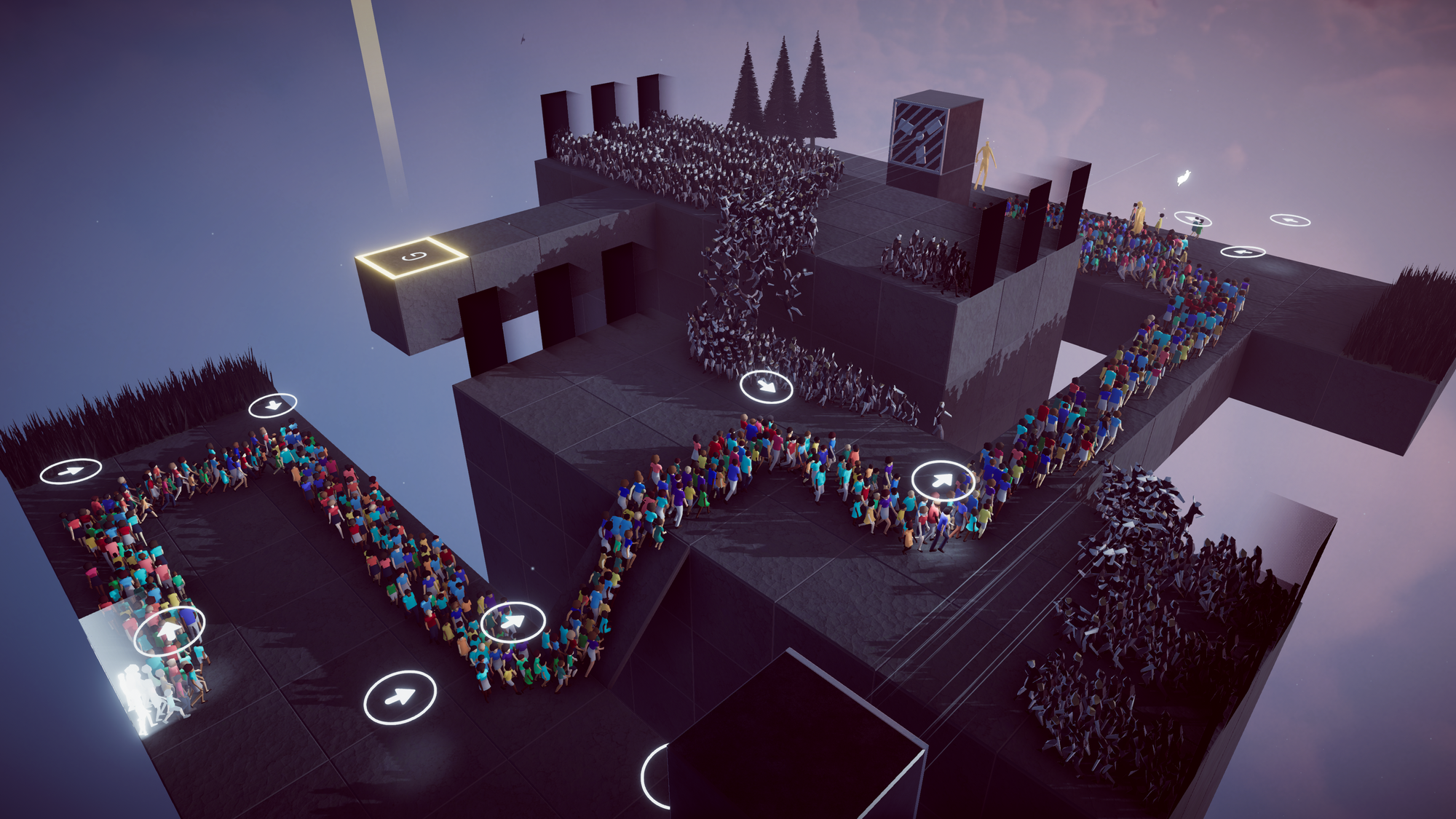
Sit, Stay, Roll Over
As the Shiba Inu, you direct the humans by moving across the map and assigning commands on sqaures of the grid. When the human pass over that square, they'll act accordingly. The most basic command is Turn, which alters the direction of the humans. From there, it only gets more complicated.
You'll soon be playing around with commands that make the humans jump – in long and short varieties – which can be combined with commands that alter the human's gravity to make them floatier. There's also environmental twists added into the equation – bodies of water, pushable blocks, fans, climbable walls and more. It's a simple set of tools, but the ways in which each of them interact and affect each other allows for infinite varieties of puzzle scenarios across different levels. What if a pushable block is also a fan? Can leaping humans break their fall with a body of water? Can I split the humans up to pull off two separate actions at once? These are the kind of questions – and experimentations – you'll find yourself asking. Even better, there's often more than solution.
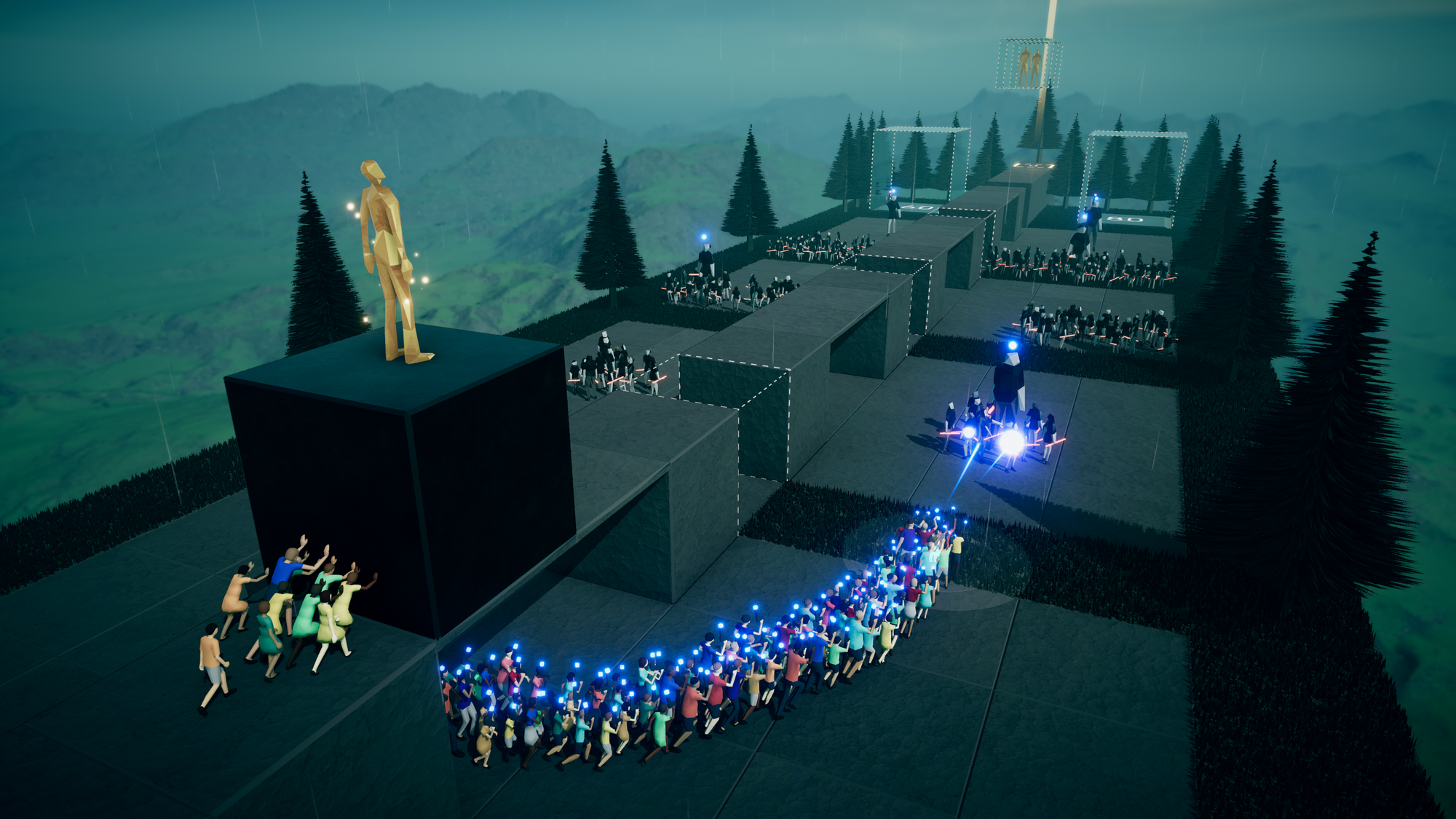
Olden Goldies
Humanity features a classic puzzle game structure, grouping roughly 10 or so levels into collections that are themed around a new command, mechanic or environmental complication. Within each collection, there's a main track of levels and then optional extra levels that don't necessarily have to be completed before moving on to the next collection. However, to unlock subsequent collections, you'll need to collect 'Goldies'.
Goldies are taller, gold humans which start in stationary (often harder to reach) positions across each map. Once your horde of humans passes through a square containing a Goldie, it will awaken and join the horde in its endless march forward. Goldies aren't essential to complete a level, but getting them to the goal blocks progresses you forward in unlocking new abilities, cosmetics and, most importantly, subsequent collections of levels.
It's a classic puzzle game structure – there's a main goal in each level, and then an optional extra goals that aid your overall game progression. The catch with Goldies is that they aren't expendable like the regular, endless stream of humans – if a Goldie accidentally walks off the map, it's lost and you'll have to restart the level afresh to get it back. This creates an interesting dynamic where the regular humans can be expended endlessly without punishment as you experiment, while the Goldies have to be paid careful attention to. Once a Goldie starts moving, it won't stop – you've got one shot to get it to the goal or you'll be forced to restart if you want to collect it.
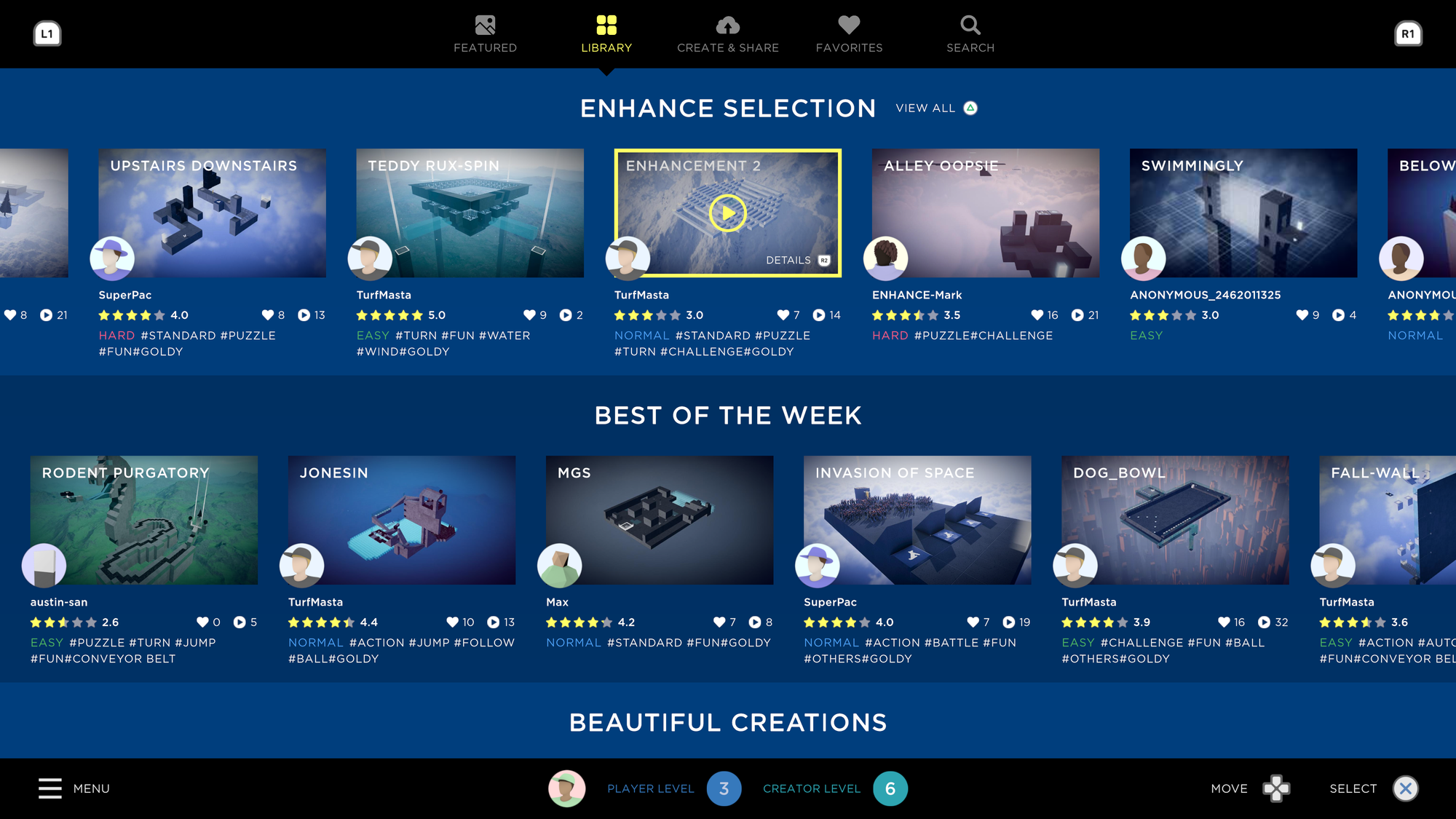
Putting It All Together
All of the elements above come together to form a really ingenious and engaging puzzle experience. There's such satisfaction in solving each level, even more so when you're able to collect the Goldies on your first try. There's lots of nuance in how you approach problems – Humanity lays out clear rules for each of its elements, then leaves you to figure out the best way forward within those constraints. It's not just a strong concept, but an incredibly robust toolset that puts the power firmly in your hands – and brain.
It's a no-brainer, then, that Humanity includes a level editor. Players can use the editor to create their own isometric puzzles using all of the game's elements. You can then test the level and upload it for others to download and play – all within the game itself.
Playing community-made levels is supported in VR Mode, but the level editor itself is not – you'll have to switch out of VR Mode and into regular flatscreen mode if you want to put a level together. That's slightly disappointing, not just because it's the one element of the game that isn't supported in VR, but because it's the mode where VR might have been able to offer something more immediately intuitive to use.
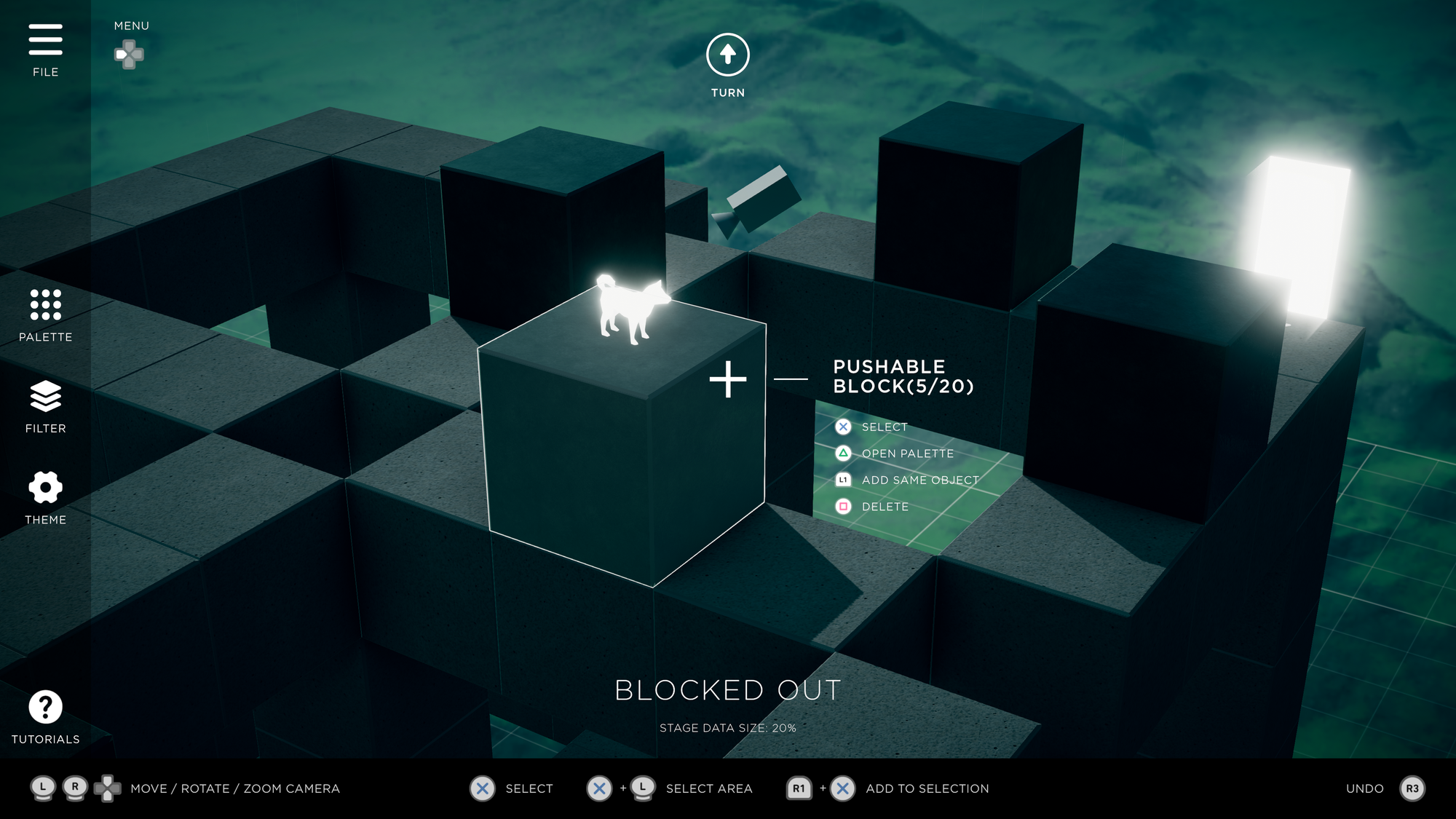
Serviceable VR Support
This ties into a wider point on Humanity's VR support, which is implemented extremely well overall, but passes by some key opportunities.
Playing Humanity in VR is not just viable, but completely enjoyable and a great way to experience the game. The visuals translate well into an immersive 3D environment and it's fantastic to be able to focus solely on the puzzles in such an intense and visceral format. You can also freely switch between flatscreen and VR Mode without punishment or loss of progress – the two modes work together as extensions of each other.
I've been playing Humanity on PSVR 2 and found performance to be near-flawless. It does run at 120Hz with reprojection, but it's barely noticeable in this type of game, given how little you move your head around. The VR visuals on PS5 were mostly comparable to when playing in flatscreen, with some slightly downgraded lighting and level of detail. The difference is noticeable when comparing head-to-head, but won't impact your enjoyment at all.
So overall, VR Mode works well and is a great option for those with a headset. That said, there's remains areas where Humanity could have taken better advantage of what the medium has to offer. Camera controls, a fairly crucial part of the game, are a good example. When playing with PSVR 2, Humanity maps camera movement to a combination of thumbstick and buttons on the Sense controllers. It's serviceable, but not the most VR-first implementation. Games like Little Cities are the gold standard for native, intuitive camera movement using motion controllers, allowing you to twist, pull and drag the position of you controllers to adjust your view and scale. You can't help but feel Humanity would be a little more fluid in VR had it implemented something similar, as opposed to stick to buttons.
It also would have given players more reason to specifically play the game in VR, beyond just extra immersion. The same could be said for the level editor, which lacks VR support and instead only offers a cursor-based flatscreen creation tool. It's a huge missed opportunity. An additional, made-for-VR editor could have taken advantage of motion controllers and used 3D space to offer a more intuitive and tactile creation system than what's achievable on flatscreen systems. It's a glaring absence and one that might have given more weight to why the VR Mode exists, beyond just being an alternate, more immerisve way to play.
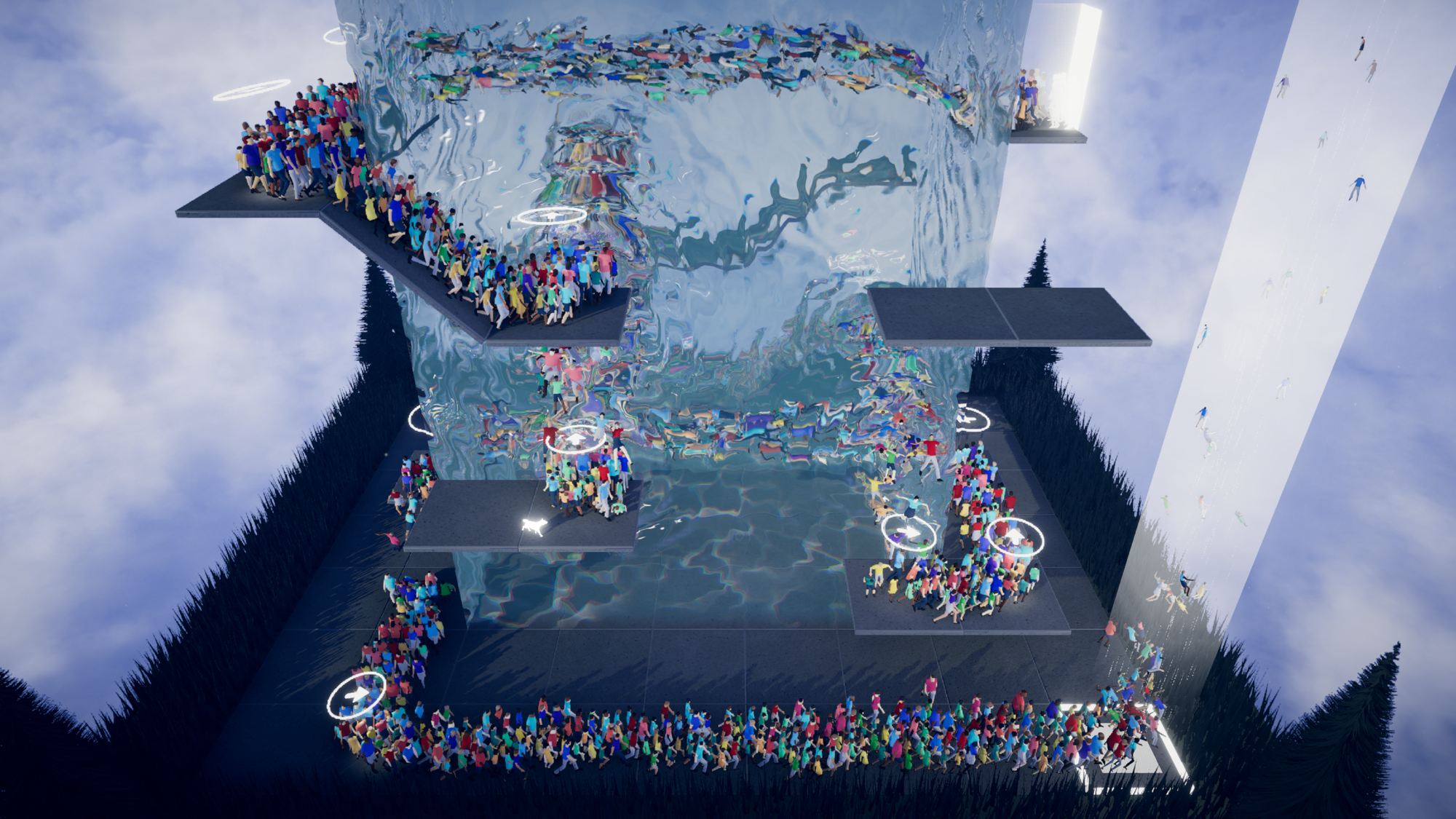
A Shining Gem
Despite some missed opportunities, Humanity is still an excellent release and nonetheless compelling in VR. It's a great fit for the medium and a brilliant example of Sony's PS5/PSVR 2 dual offering strategy, also seen in Gran Turismo 7 and Resident Evil Village.
I'm still working my way through the campaign (hence why this isn't labelled as a full review), but even so, it's clear that that Humanity is a true puzzle game gem and worth trying out in whatever format you'd prefer. It feels especially at home on PS5 – it's nice to be able to relax on the lounge and play on the TV some nights, then dive into the full immersive VR experience on others.
Humanity is available now for PS5/PS4 (with cross buy support) and PC via Steam, with optional VR support on PSVR 2, PSVR and PC VR headsets respectively. On PlayStation platforms, the game is available to download for free for those subscribed to the Extra and Premium tiers of PlayStation Plus.
from UploadVR https://ift.tt/7FDZT3b
via IFTTT
No comments:
Post a Comment